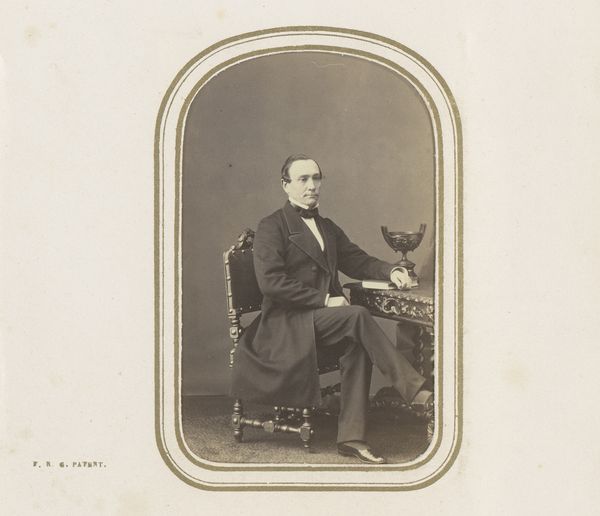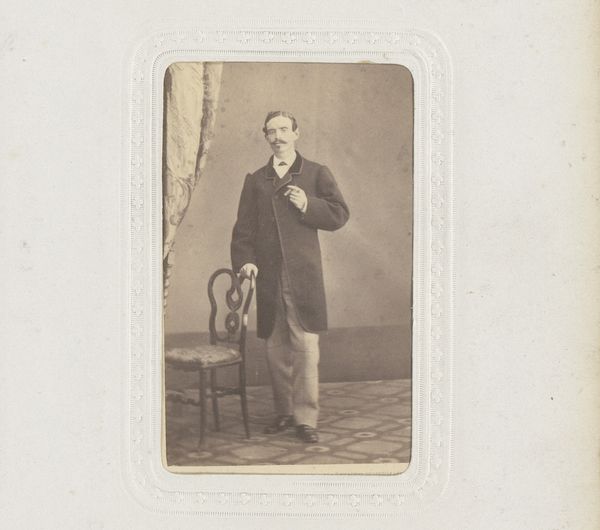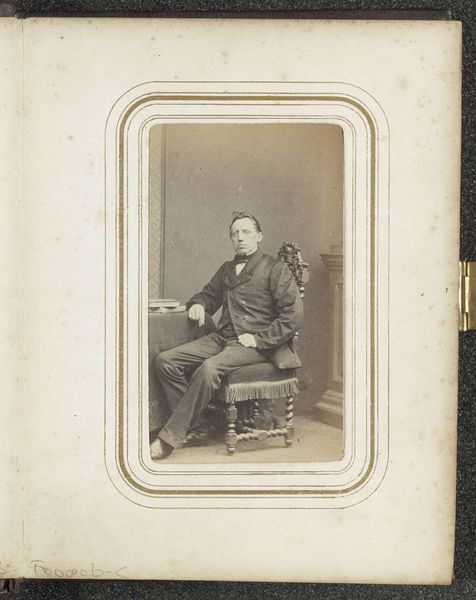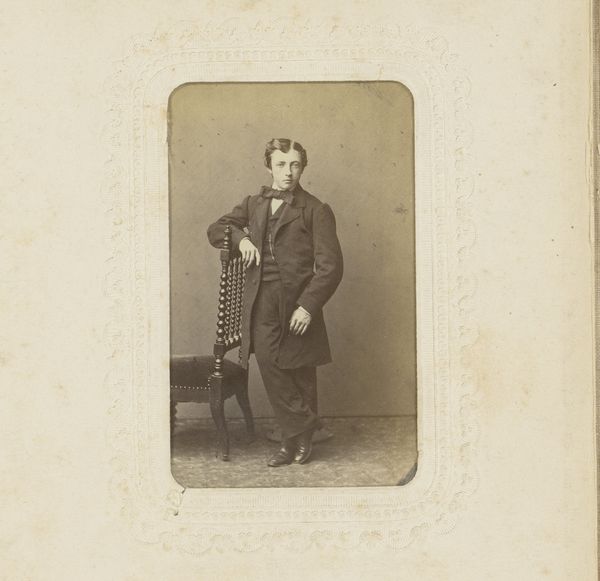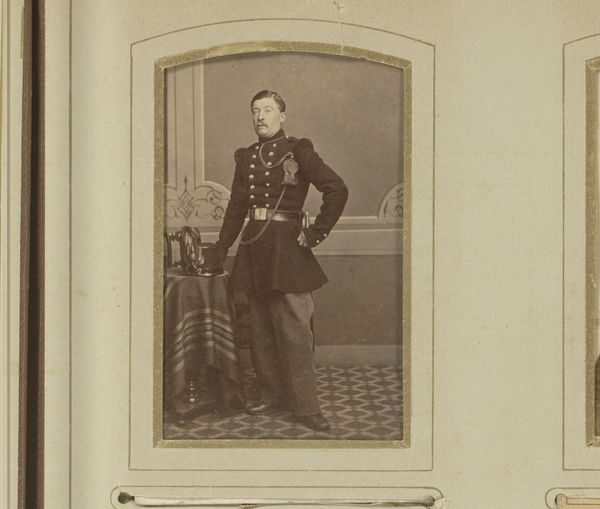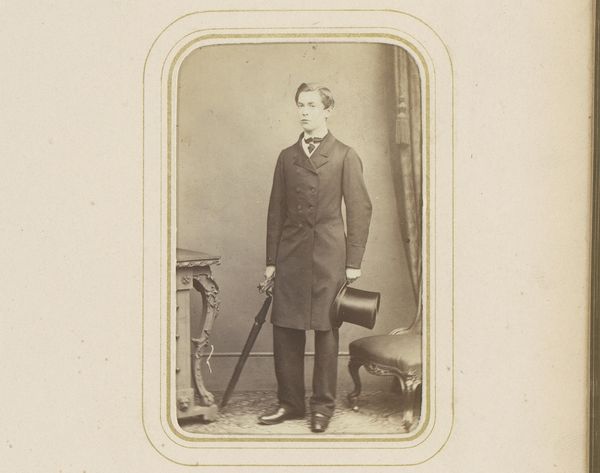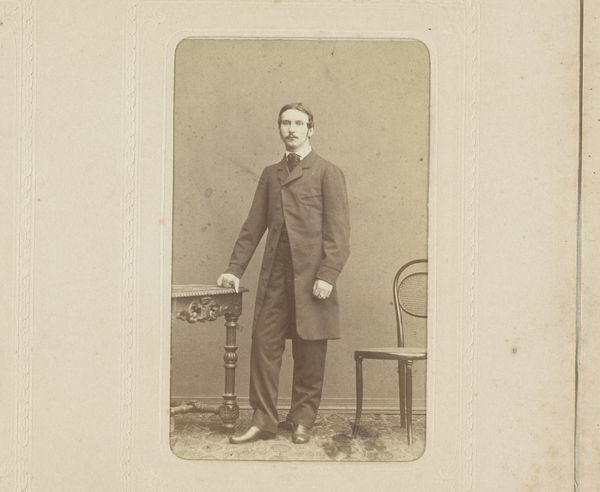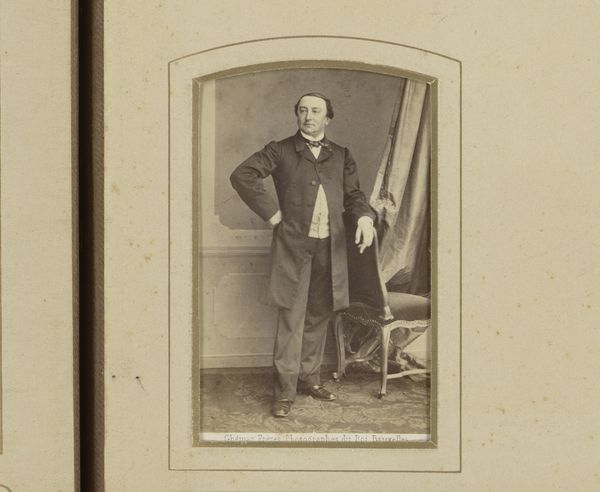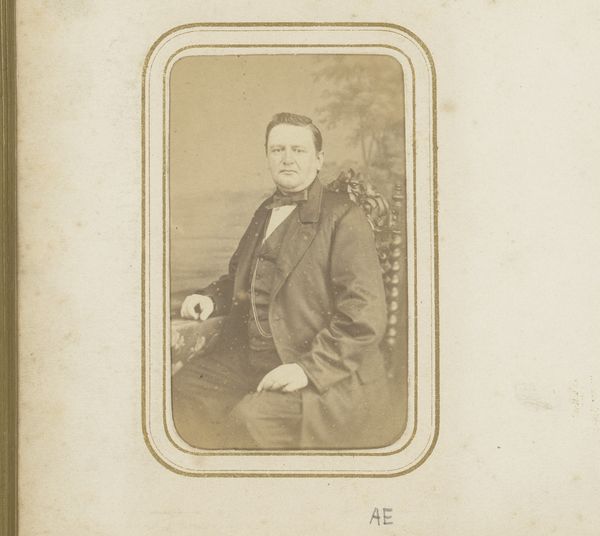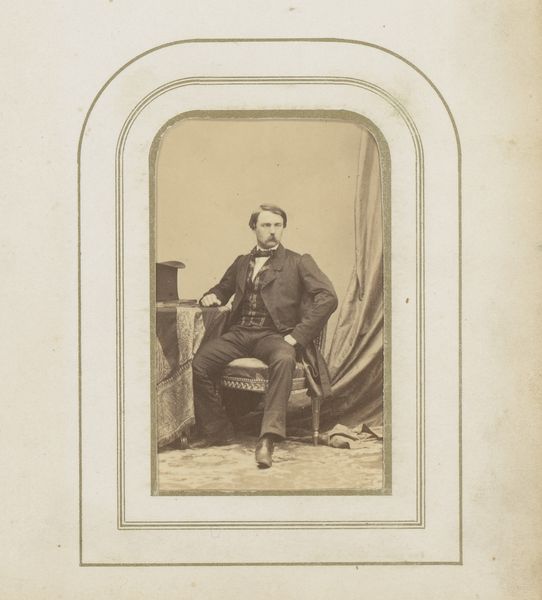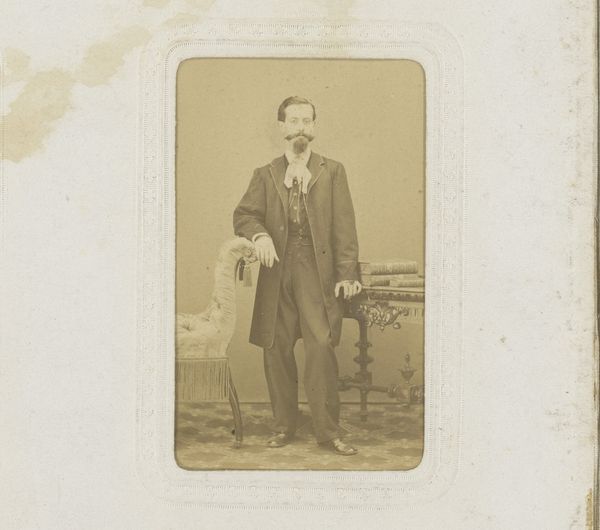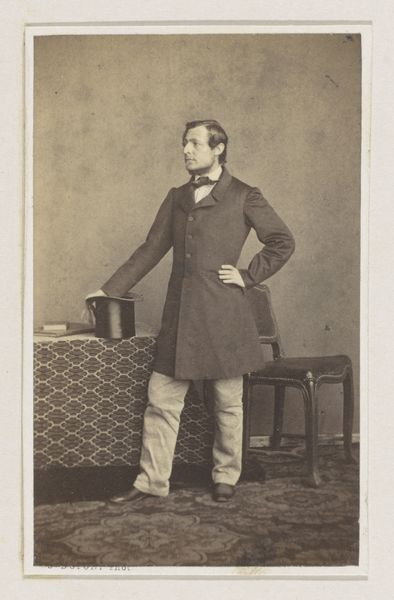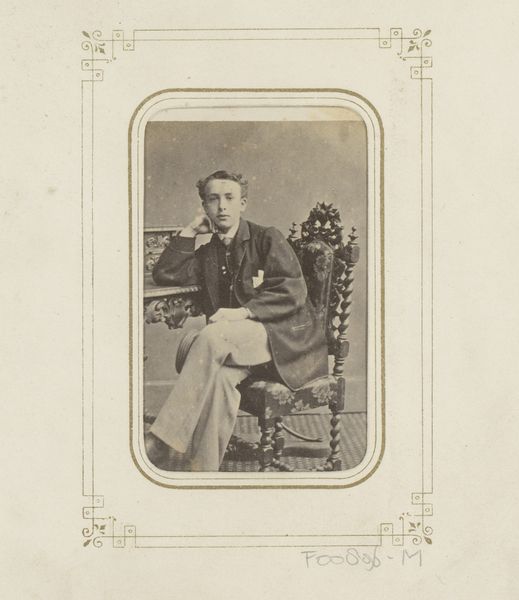
Dimensions: height 84 mm, width 51 mm
Copyright: Rijks Museum: Open Domain
Curator: Here we have "Portret van een man" by Louis Robert Werner, a gelatin-silver print from circa 1865 to 1890. Editor: The sepia tones give it a certain melancholy, don’t you think? It's a striking, somewhat formal portrait but there's an undeniable sense of ennui in his eyes. Curator: Absolutely. The process itself, gelatin-silver printing, involved coating paper with a light-sensitive emulsion, revealing an image only after careful chemical development and fixation. Consider the labor invested to produce these artifacts for the bourgeoisie during the 19th century. Editor: And the carefully curated pose speaks volumes, doesn't it? The subject, elegantly dressed, leans casually against an ornate chair. It seems to signal a certain level of leisure and wealth. It makes me wonder about his access to opportunities and power compared to women or people of color in that era. Curator: His sartorial choices – the double-breasted coat, bow tie, and pocket square - do reflect his status and how fashion itself acted as a visual signifier of class and profession at that moment. I wonder about the textile mills involved and the labor conditions associated with garment production then. Editor: Right, fashion as a construct deeply interwoven with class, labor, and societal norms! It brings to mind the societal pressure to conform, especially for men who were often limited to narrow roles. There's something stifling about that level of prescribed performance, and this photograph might reflect it, especially when compared with the romanticism characterizing the end of the 19th century. Curator: Interesting point. These images become more poignant once you begin unraveling all those underlying layers of social expectations and the material underpinnings of what at first appears as simply a vintage photograph. Editor: Exactly! It allows us to look at this photograph as more than just a static image; it’s a document loaded with narratives waiting to be excavated. Curator: Agreed. By observing not only who is in the picture, but the making-of process itself, photography emerges not merely as art but a key to unlocking our history. Editor: Well put! It enriches how we perceive art of the past while inviting conversations that are very much alive today.
Comments
No comments
Be the first to comment and join the conversation on the ultimate creative platform.
